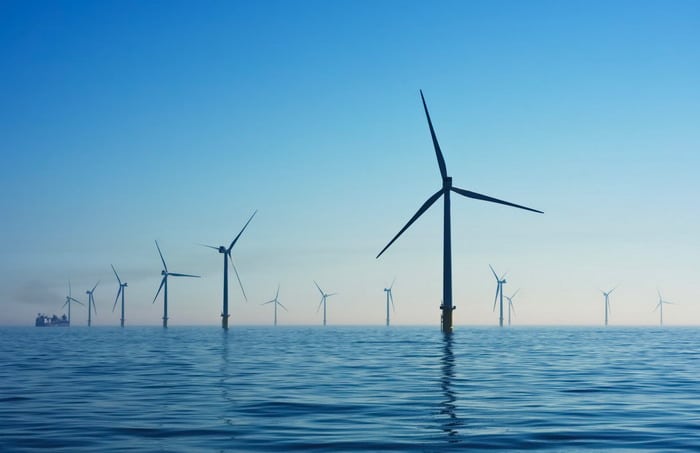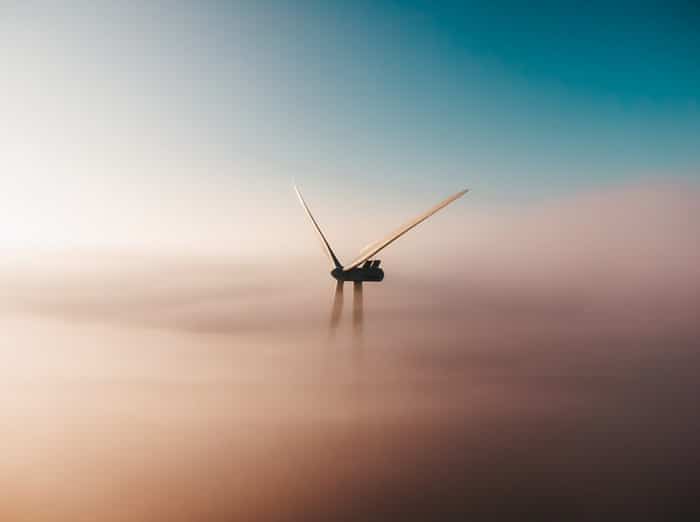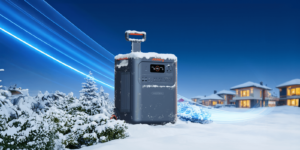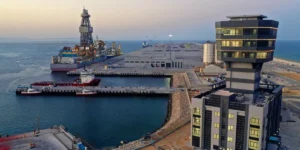Why Do Wind Turbines Rotate Clockwise?

The sight of wind turbines spinning majestically in the breeze has become increasingly common across landscapes around the world. These modern marvels are a testament to human ingenuity in harnessing nature’s power for sustainable energy. One detail that might pique the curiosity of observers is the direction in which these turbines rotate.
This article answers the question ‘Why do wind turbines rotate clockwise?’ by presenting the reasons why today’s wind turbines predominantly rotate in this direction.
Predominantly, wind turbines rotate clockwise when viewed from the front. This design choice is far from arbitrary and is rooted in a combination of historical precedent, aerodynamic efficiency, and mechanical practicality.
Historical Precedents
The direction of rotation for wind turbines can be traced back to their ancestors: windmills. Historically, in Europe, windmills used for grinding grain or pumping water predominantly turned clockwise. This tradition was largely due to the standardization of design, which made it easier for millers to operate and maintain these machines. As windmills evolved into wind turbines for electricity generation, the clockwise rotation was maintained, partly due to this historical inertia.
Aerodynamic Efficiency
At the heart of the decision for wind turbines to rotate clockwise is the principle of aerodynamic efficiency. The blades of a wind turbine are designed much like an airplane wing, with an airfoil shape that creates a differential in air pressure across the blades as wind passes over them. This design maximizes the lift and minimizes the drag on each blade, turning the rotor effectively and generating electricity.
The clockwise rotation is a result of how these blades are angled and the direction in which they are most efficient at capturing wind energy. Engineers design the blades to ensure that they capture the oncoming wind optimally when turning in a clockwise direction. This doesn’t mean that a counter-clockwise design couldn’t be efficient, but standardizing the direction of rotation helps streamline manufacturing and maintenance processes.
Mechanical Practicality
Another reason for the clockwise rotation is mechanical practicality. The components of a wind turbine, such as the gearbox, generator, and braking systems, are engineered for maximum efficiency and durability in a clockwise rotation. This standardization simplifies the production and maintenance of wind turbines, as parts are interchangeable and technicians can apply the same knowledge and skills across different turbines.
Moreover, the direction of rotation can affect the wear and tear on the turbine’s components. By optimizing the design for clockwise rotation, manufacturers can ensure that the stresses exerted on the turbine’s parts are minimized, thereby extending the lifespan of these components and reducing maintenance costs.
Safety and Consistency
The uniform direction of rotation among wind turbines also has implications for safety and consistency. For birds and other wildlife, predictable patterns of rotation can potentially reduce the risk of collision, although the impact of wind turbines on wildlife is a complex issue that involves many factors. For human operators and technicians, consistency in design helps in training and in developing safe operational procedures.
Wind Turbines Modern Design To Improve Efficiency
In addition to the direction of rotation, the design and layout of wind turbines significantly impact their efficiency and operating time. There are several key factors that engineers consider when designing wind turbines to maximize their effectiveness:
Blade Design
The shape and size of the blades are crucial for capturing the maximum amount of wind energy. Blades are typically designed with an airfoil shape, similar to the wings of an airplane. This shape allows the blade to generate lift, which in turn causes the blade to rotate. The length of the blades also plays a significant role; longer blades can capture more wind energy, but they can also be more susceptible to damage in high winds.
Tower Height
Taller towers allow wind turbines to access stronger and more consistent wind speeds, which can significantly increase their efficiency. This is because wind speeds are typically higher at higher altitudes, where there are fewer obstructions to slow the wind down. Additionally, taller towers allow wind turbines to capture wind energy from a larger area, as the blades have a larger radius of rotation.
Rotor Diameter
The rotor diameter, or the distance from the tip of one blade to the tip of the opposite blade, is another important factor in wind turbine design. A larger rotor diameter allows the turbine to capture more wind energy, as the blades sweep through a larger area. This can increase the efficiency of the turbine, especially in low wind conditions.

Both onshore and offshore wind turbines rotate clockwise, image source: Unsplash
Blade Angle
The angle of the blades relative to the wind, known as the pitch angle, is also critical for efficient operation. The pitch angle is typically adjusted automatically by the turbine’s control system to optimize power production. In general, a steeper pitch angle is used in high wind conditions to prevent the turbine from spinning too fast and causing damage, while a shallower pitch angle is used in low wind conditions to maximize power production.

Wind turbines installed on top of the mountains also rotate clockwise, image source: Unsplash
Generator Efficiency
The efficiency of the generator, which converts the mechanical energy from the rotating blades into electrical energy, is another important consideration. Modern wind turbines typically use permanent magnet generators, which are more efficient than traditional generators. These generators can convert a higher percentage of the wind energy into electrical energy, increasing the overall efficiency of the turbine.
Conclusion
The clockwise rotation of wind turbines is a multifaceted choice that balances historical precedents, aerodynamic efficiency, mechanical practicality, and safety considerations. While the direction of rotation is just one aspect of wind turbine design, it highlights the careful consideration that goes into every element of these incredible machines.
By carefully considering factors such as blade design, tower height, rotor diameter, blade angle, and generator efficiency, engineers can design wind turbines that are highly efficient and capable of generating large amounts of clean, renewable energy while protecting wildlife.
As wind energy continues to play an increasingly important role in the transition to a more sustainable energy future, ongoing advancements in wind turbine design and technology will become crucial in maximizing the potential of this abundant and renewable resource in the energy mix of the planet.






